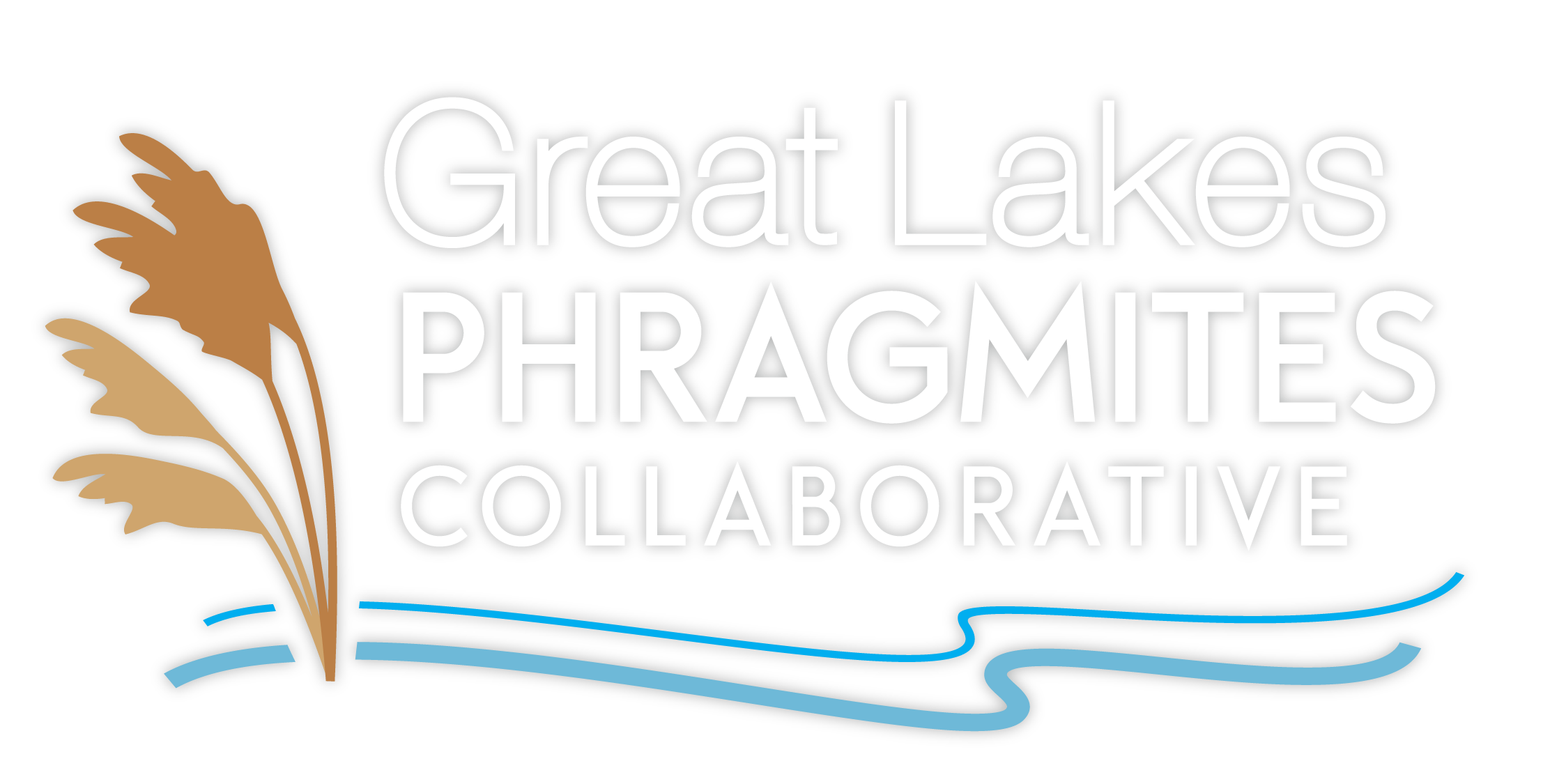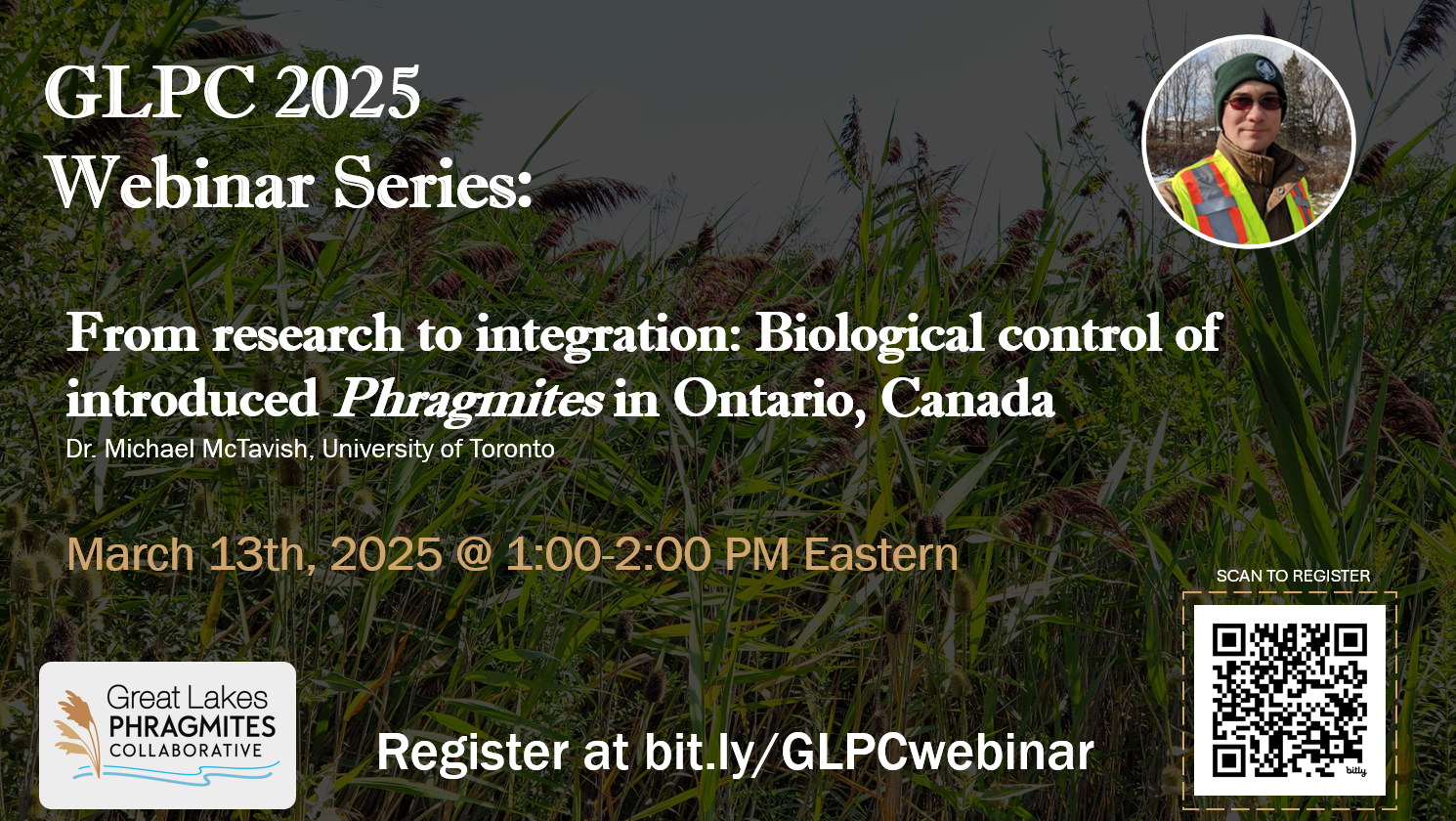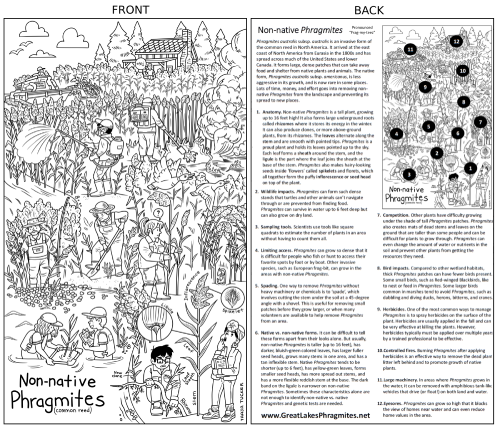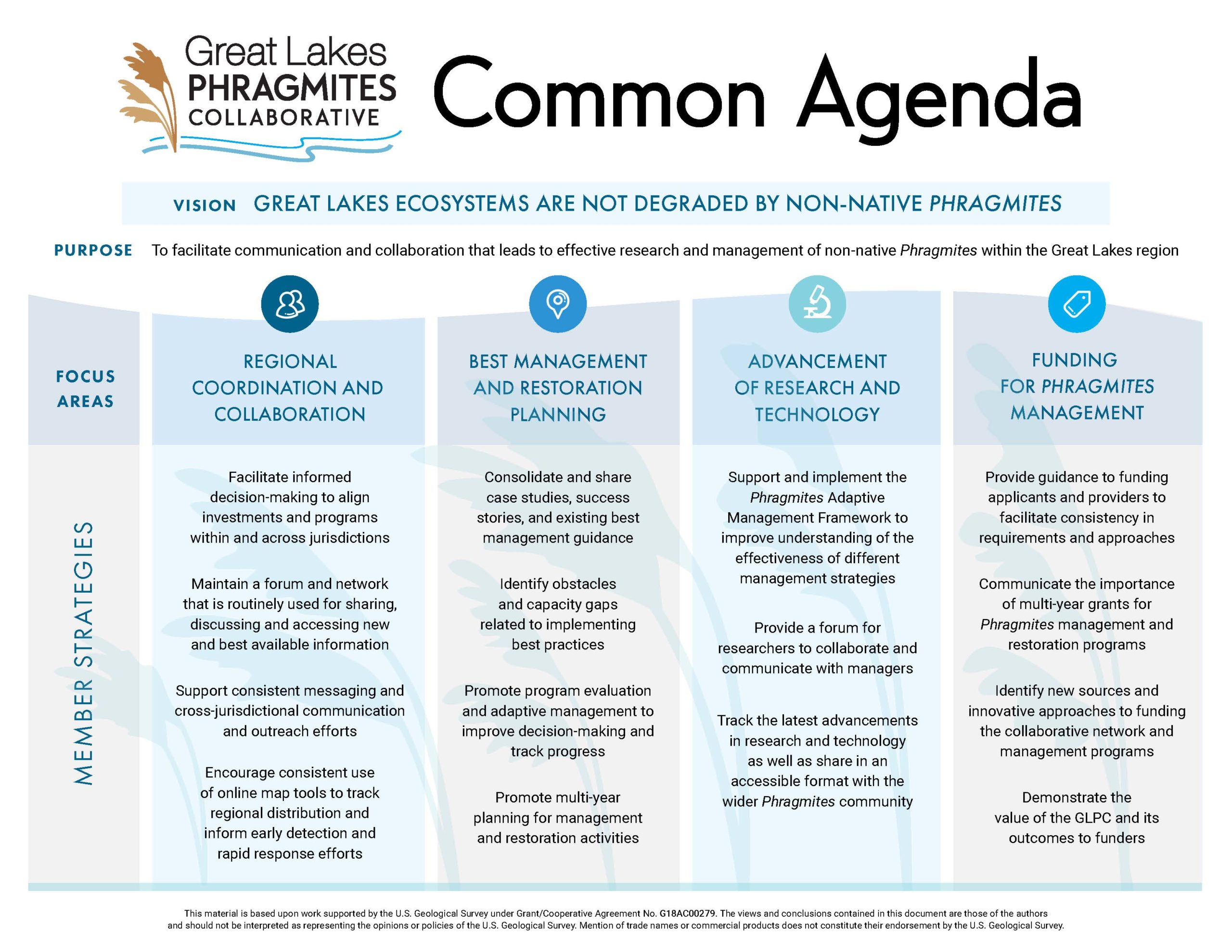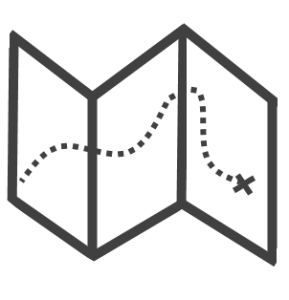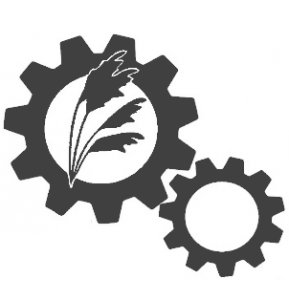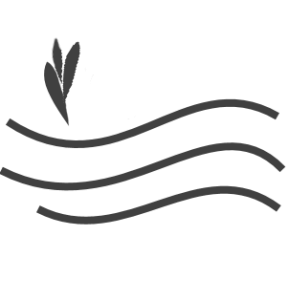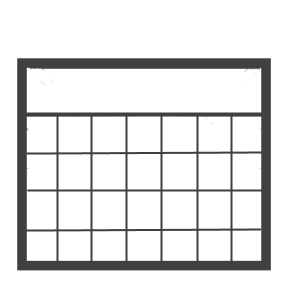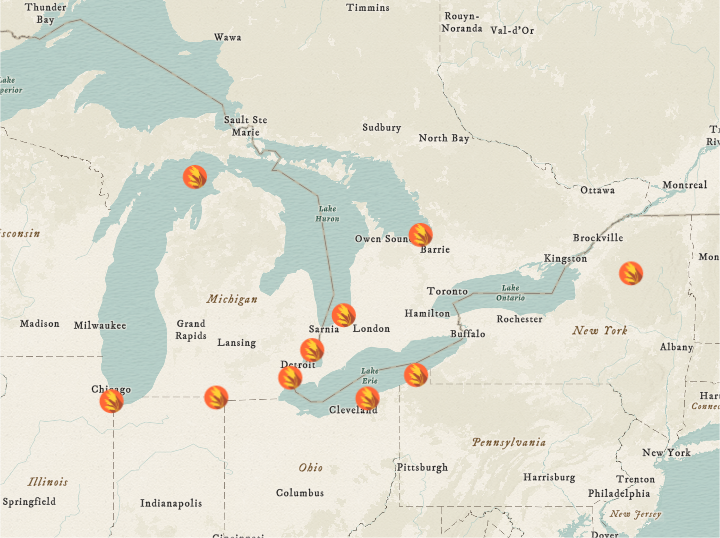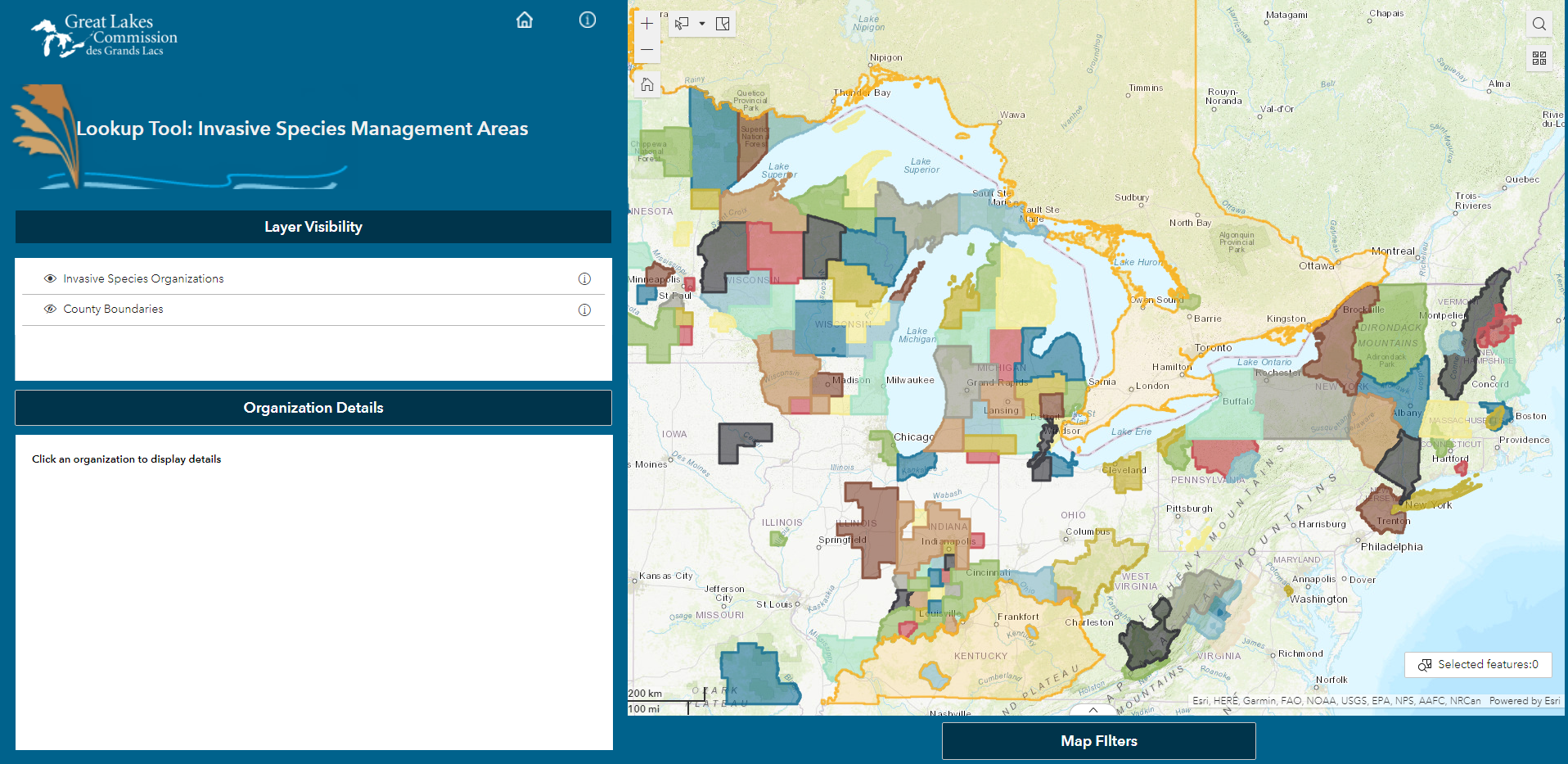Non-native Phragmites australis (haplotype M) – also known as Common Reed – is a highly invasive plant species now common in North American wetlands. This species has wide-ranging social, economic, and ecological impacts. Learn more. There are many ways to manage Phragmites depending on resources and site conditions. Learn more about management options and adaptive management, and view our collection of resources.
The Great Lakes Phragmites Collaborative is a network of agencies, organizations and citizens who are engaged in non-native Phragmites in some way, including management, research and communication. The Collaborative was established to reduce the spread and occurrence of Phragmites in the Great Lakes basin by improving management and research and enhancing communication and collaboration. The Collaborative also serves as a resource center for information on Phragmites biology, management, and research. We are led by a diverse Advisory Committee and are organized according to the principles of Collective Impact. We invite you to participate in the Collaborative by joining webinars, reading blog posts, joining our newsletter or listserv, or contacting us!
 IDENTIFY
IDENTIFY
Learn how to identify Phragmites and distinguish between the native and non-native forms.
MAP & TRACK
Report and share your Phragmites sightings, and see where Phragmites has been detected in your area.
ADAPTIVE MANAGEMENT
Learn about the Phragmites Adaptive Management Framework and how it can benefit your work.
MANAGE & RESTORE
Learn about effective management techniques and discover best practices for post-treatment restoration.
LISTSERV
Join a conversation with over 600 Phragmites professionals: ask questions and stay connected.
BLOG POSTS
Read blog posts on a range of topics, from management techniques to information about the GLPC and PAMF.
GLPC Calendar
Subscribe and keep up to date on GLPC webinars, PAMF cycle reports, and related events.
